LG G Flex Review

Introduction
Note: Before you proceed, please keep in mind that the LG G Flex is still avaiable in select Asian regions only. The sheer fact that LG has come to the US to showcase the smartphone for us, however, can be seen as an indication that a wider availability may be right around the corner.
Flexible displays seem to be the future, something that’s particularly evident as we look at what’s going on with the next-generation of high-definition televisions. Well, it’s also extends into the smartphone kingdom as well, seeing that it’s a good starting point to showcase the new up and coming technology. Some might be skeptical about the advantages that flexible displays will offer, while others are adamant that this is the sure proof way of gaining innovation in the space.
One of the trailblazers right now is Korean based LG, a company that’s been on the cusp of cutting-edge thanks to its flagship device in the LG G2. Now, they’re hoping to get people buzzing about flexible displays, amongst other things, as the LG G Flex comes to the scene packing some new technology that we haven’t seen before. Indeed, it’s a super spec’d “phablet” of sorts, but it’s packing several other notable new features – like its unique concaved curved design, stacked battery technology, and self-healing coating.
Is it different? Absolutely! More importantly though, is whether having all of these new features will translate to offering consumers with a practical smartphone – one that gets the job done.
The package contains:
- Wall charge
- microUSB cable
- Stereo headphones w/additional tips
- SIM removal tool
- Get started guide
Design
If you look at the phone directly from the front or back, you wouldn’t be impressed much by its design, just because we’ve seen it before – the LG G2 to be exact, though bigger in size obviously. Essentially, its size alone places it into the “phablet” category, which makes it rather cumbersome to hold or handle with a single hand. Tilting it to check out its profile, that’s when it hits us – there’s a very distinct curve with its design. Aside from giving it an aesthetic value over other smartphones, the curve in itself proves to provide better ergonomics, such as in the case of holding it against our face for phone calls.
Typical of being an LG-made device, the G Flex is constructed from the same plastics used by other phones in its lineup. It’s a fitting choice to go with, mainly because it’s more pliable than something like metal – allowing the phone to absorb pressure, to the point of making it flat, without causing the case to crack or break. Unlike other plastic constructed phones, though, there’s a self-healing coating on the back cover. Yes, it gives the phone a glossy look, but it’s not as susceptible to fingerprints or smudges. When it does accumulate them, they’re easily wiped away thanks to that self-healing coating.
Frankly, it’s the Wolverine phone. Yes, the beloved character from the X-Men universe, whose mutant power consists of having accelerated healing abilities. Just like the lovable mutant, the G Flex’s self-healing property is very uncanny – uncommon in the smartphone universe. Instead of employing a UV hard coating, the G Flex instead utilizes a soft resin element that allows the phone to fill in scratches that occur through every day wear and tear. However, the self-healing process takes some time to happen, one that’s better achieved under warmer temperatures. In our test, we gave it a surface level scratch with a sharp knife. Plainly visible at first glance, but after a few minutes spent in our pocket, where it absorbs our warm body temperature, the width of the scratch is reduced greatly. However, it’s not entirely eliminated. At certain angles, it looks like the scratch never happened, but at others, it’s still noticeable.
Overall, the design is innovative on many fronts, something that not only catches us for its size and curved shape, but for all the tech that’s involved with its design. First, it’s super durable to withstand being flattened as we sit on a chair – all the while it’s in our back pocket. Secondly, the self-healing properties seem tangible enough to keep it clean looking for those minor incidents. However, we wouldn’t go as far to say that it’ll “heal” very deep scratches. And finally, the curved nature of the handset is very ergonomic – especially when using it for phone calls.
Keeping a close knit tie to LG’s current flagship smartphone, the G2, the G Flex also has its power button and volume controls placed on the back of the phone. Again, most people will find it alien at first, but LG slightly improved the set with this model, as the power button as a more pronounced/raised feel – while these square dots in the volume controls jut out just a tiny bit to also give it a pronounced feel. The power button itself incorporates an LED notification light, which we can customize to display various notifications.
Around its trim, we have the usual assortment of ports – these include the microUSB 3.0 port for charging/data connectivity, various microphones, 3.5mm headset jack, antenna (for use with Korea’s TV service), and microSIM slot. In the rear, LG blesses this phablet with a 13-megapixel auto-focus camera, which is surrounded by its LED flash and IR blaster. With the latter, it transforms the phone into a useful universal remote. Meanwhile, the speakerphone grill is positioned towards the bottom right corner of the rear casing.
Display
The design of the G Flex is curved, so that means that its display needs to accommodate all of that flexing. Before we get into the tech behind it all, this phablet is graced with a monster sized 6-inch 720p P-OLED panel with real RGB stripe pixel structure. Now we know what some of you are thinking, why 720p resolution as opposed to 1080p? Well, it’s probably due to pricing concerns or supply limitations – so it’s been decided that 720p would most benefit the handset. It’s sharp looking from a normal viewing distance, but after scoping out 1080p displays everywhere else, we begin to realize that upon closer inspection, it lacks the razor sharp visuals of its 1080p rivals.
Now let’s talk briefly about how they’ve been able to achieve the “flex” with its display. Going with a P-OLED display, where the “P” stands for plastic, the panel itself is built on plastic substrates instead of glass. Using this particular model, the display is able to achieve outstanding flexing properties and an ultra-thin thickness of less than 1mm. At the same time, it’s more durable than your traditional glass layer – ensuring that it’s not easily breakable.
Seeing that the display is still OLED, we notice that it has a distinctive overly saturated color reproduction – more on the cooler side actually, which tends to give a bluish hue to the color white. Thankfully, we can modify the color output of the display in the display settings, where we’re given preset options for Standard, Vivid, or Natural. Even though it produces a nice glow at the highest brightness setting, it’s still prone to being washed out when it’s viewed outdoors with the sun present – and that’s despite having fantastic viewing angles.
For all of the cool things going on with the display, we have one major distraction that’s most evident when the brightness is set around the 50% mark. Specifically, the display has this odd banding and color distortion, almost giving the entire panel a splotchy look at times.
LG G Flex 360-Degrees View
Interface and Functionality
LG has made some considerable ground with its latest customized Android experience, which is featured on its flagship, the LG G2 – so it only makes sense to see the same experience on the LG G Flex. In general, the Android 4.2.2 Jelly Bean experience running on our review unit is packing the same visuals and features we’ve seen already, but it packs along some new features that deepen its diverse offering. Visually, there’s nothing out of the ordinary here, as it continues to be highly customizable – though, it’s still very bright and vivid with its presentation. Some people love it, some people hate it, but that’s what it is on the G Flex.
So here’s what’s new with the experience:
QTheater: Not only is it a dedicated media related app, but QTheater is something that can be accessed via the lock screen by holding the handset in landscape, and then using pinch out gestures to uncover the app. At the heart of it all, QTheater is nothing more than an alternative to the standard Gallery app. Even though there is a selection for YouTube, clicking it doesn’t do anything special, seeing that it simply launches the app.
Dual Window: Multi-tasking is already enhanced with the customized experience thanks to LG’s QSlide apps and Slide Aside feature, but they’re upping the ante here with Dual Window, which is very similar to Samsung’s Multi-Window feature. Accessing the feature is done by pressing down on the back button at any time for a few seconds. From here, we’re given a window where we can click and drag apps to the top and bottom windows – essentially stacking them so they can run simultaneously. It’s a great tool when it comes to juggling around between two things, but for right now, the supported apps are limited to Videos, TV, Internet, Messaging, Email, Gallery, Chrome, Memo, YouTube, Google Maps, Hangouts, Gmail, Dictionary, and File Manager.
Swing Lockscreen: Giving the lockscreen more of an animated and interactive approach, the Swing Lockscreen makes the lockscreen adapt to the time and weather – where we can tilt the phone at various angles to see more of the scenery of the lockscreen. We wouldn’t say it’s a pertinent feature, but rather, a simple touch to give the lockscreen a more dynamic presentation.
Urgent Call Alert: Is someone constantly calling you? Well, if you’ve ever come across this situation, the LG G Flex’s Urgent Call Alert will let you know visually if someone is in desperate need of your attention. When you miss several consecutive calls from a person/number, the LED notification lights of the phone, both front and rear, will blink red to indicate an urgent call alert.
Well, that pretty much wraps up all the new features associated with the customized Android experience of the LG G Flex. Nevertheless, it packs all the same features we’ve seen before – such as Knock On, Guest Mode, Answer Me, Slide Aside, QuickRemote, and much more.
Messaging
Well this certainly isn’t a surprise, but the LG G Flex is running the same messaging experience as the G2. Although the UI of the app is not particularly comfortable, as the text bubbles are quite big, which makes it really difficult if you want to read through a longer conversation, you do stuff like altering the looks of those bubbles, as well as changing the background of text conversations to whatever you feel like. You can also schedule a text to be sent at a particular time in the future, and you can also insert various Android smileys to add some colorful emotion to your messages. All in all, the messaging app left us with mixed feelings, as it's not really consistent in terms of UI design, but it's more than certain that it'll get the job done. Plus, it'll surely appeal to those who enjoy tweaking every single aspect of their smartphones.
With its enormous 6-inch screen, there’s no problem typing out a lengthy message with the on-screen keyboard, mainly because its layout is super spacious, very responsive, and we’re given access to a horde of characters from the main layout.
Organizer
We’re not going to go into detail regarding the organizer features of the G Flex, even more when it’s identical to the LG G2. Therefore, it features all of the extensive things we’ve seen already – like its very handy QuickMemo note taking app, which can be instantly launched while it’s turned off by long pressing on the volume up button. Beyond that, it has some very versatile apps for tasks, alarms/world clock/timer/stop watch, voice recording, weather and, of course, a calendar.
While most of these apps function very well, the calendar is a great example of why having too many features may make the UI feel too crowded and complex. The main screen of the calendar tries to fit together a month view plus a day, week or an agenda view, all at the same time, and it fails miserably at this, because it's simply not easy enough to use, especially if you have many appointments set. However, if you're sticking to something like week, day or agenda views only, things get much more intuitive and pleasant.
And of course, the Google Now experience is on board to keep us organized from the start of our day, to the end.
Processor and Memory
Armed with the same piece of silicon like its sibling, a quad-core 2.26GHz Qualcomm Snapdragon 800 SoC coupled with the Adreno 330 GPU and a healthy 2GB of LP DDR3 RAM, it naturally screams at a fanatical pace with its performance. It’s snappy, responsive, and downright quick with all operations – both simple and complex ones. And it really shows when it’s able to handle playing a YouTube video while surfing the web with its Dual Window feature. Finally, its benchmark scores tell us that it’s a formidable figure.
Unlike some of the other recently launched phablets, the LG G Flex sadly lacks a microSD card slot. However, it’s stuffed with 32GB of storage, which is a healthy amount we’re pleased to see. Out of the box, though, that figure actually translates to 24.12GB.
Internet and Connectivity
You may think that the 6-inch screen makes browsing a breeze, but this isn't necessarily the case, especially if you stick with the LG browser that's on the homescreen by default. That's so because it doesn't inflate text, which means that it's still quite small to read comfortably even on such a gigantic screen. That's why we'd recommend that you use the Chrome browser, as it will make reading that much more comfortable for you. One thing we dislike about Chrome, however, is that it doesn't snap your view once you start scrolling vertically or horizontally – this is something that the iPhone and even Windows Phone have already managed to get right, while Android's Chrome is still lacking it.
The LG G Flex is choke-full of connectivity features. It has the must-haves such as LTE-A, HSPA, 3G, and 2G, as well as Wi-Fi a, b, g, n, n 5GHz, ac. Additionally, there's also A-GPS, NFC, and an infrared port.
Camera
Controls and features, that’s what is plentiful and in abundance with the LG G Flex’s camera app, which yet again takes from the LG G2. From its superb set of shooting modes, to modifying certain controls, there’s a lot that hardcore shutterbugs will appreciate with the experience. Best of all, they’ve taken the art of snapping a selfie to another level with its enhanced Face Detection Indicator feature. Instead of getting crummy looking selfies with the front-facing camera, we can use the rear one to take centered images, which is done when the LED notification light in the power button light up green to indicate face detection is active.
Now let’s talk about the hardware at the center of it all, a 13-megapixel auto-focus camera. Unlike the module in the LG G2, the one here lacks optical image stabilization. Without that in its arsenal, it adversely affects the overall quality of its shots, seeing that details are generally softer.
For general 4” x 6” printouts, the photos it produces suffice, but if you intend on blowing them up, they just won’t cut it. Considering that it was a pretty cloudy day, the exposure seems balanced enough to still draw out some details in our shots – without hiding them due to under exposure. Colors are nice and pleasant, which is most notable for the vibrancy it casts into the shots.
As expected, the quality takes a bit of a dip under lower lighting situations – though, as a whole, they’re bright due to the longer exposure. However, details become very grainy looking, to the point of making them appear speckled. Well, we’re thankful that noise is minimized, but yet again, the lack of optical image stabilization results in some blurriness sometimes. Thankfully, the LED flash is able to compensate things by producing a potent amount of lighting.
In the end, its performance is nothing more than average after looking at the results. Did we expect better? Absolutely! But we suppose that LG’s flagship will continue to take the top honor at this point.
LG is now 2 for 2, but giving the LG G Flex the awesome ability of shooting 1080p videos at 60 FPS – in addition to the usual 30 FPS. Whereas its still image quality is underwhelming at times, its video recording performance is much better. Yes, that silky smooth 60 FPS capture rate helps in giving it very pleasing visuals, but it’s able to maintain a certain level of crispness with its quality. When the conditions are right, like when there’s a sufficient amount of lighting, details are pretty good looking, colors appear very natural in tone, continuous auto-focus locks in right away, and audio recording is clear sounding for the most part. There’s an 8x digital zoom that’s available too, but it becomes very pixilated at the longest zoom level.
Unfortunately, the same likeable results don’t extend into its low lighting performance. First and foremost, its capture rate drops to 27 FPS – giving it a choppier look when compared to its 60 FPS rate. Additionally, it’s simply just too under exposed, which results in a very dark and dim composition.
Multimedia
We're not in love with the built-in music player, as it doesn't show all the tabs at the top of the page at the same time. There are tabs letting you sort music in various ways, like albums, artists, genres and so on, using them is not very convenient. Other than that, the visual design of the music player is quite simplistic and likable.
Like the G2, the G Flex features 24bit, 192 kHz Hi-Fi sound playback, giving us support for premium quality files – albeit, we suspect that most people would barely be able to distinguish it from the standard 16 bit / 44.1 kHz format.
Again, LG notes that due to the curve design of the handset, the audio emanating from its internal speaker is amplified due to the separation from the surface it’s laid flat on. And rightfully so, we notice the stronger and more potent punch it’s able to deliver.
The QuadBeat 2 earphones that arrive with the LG G Flex are capable of playing some very high-quality sound. The problem is that their form-factor, which requires you to stick them deep in your ears, makes them uncomfortable to use. We'd rather use something like Apple's EarPods, which have a much more convenient design that doesn't require you to make love with your ears in order to get some decent bass.
Do we even need to say that the LG G Flex is an outstanding device to watch video on? Yep, the 6-inch screen is simply amazing for the purpose. No matter if it's locally-stored or streamed video, the G Flex makes things come to life with that enormous screen, and your eyes will forever be thankful for this. Come to think of it, we can’t help but compare it to the experience we get from watching a move in an IMAX theater. Then again, it’s not really the same, despite the fact that we also have a curved screen at our disposal. Regardless, there’s no questioning that the experience is nothing short of superb.
Call Quality
We’re given a damn good calling quality experience with the handset. Again, the unique design of the smartphone comes to mind, as its curvature is ideal when resting it against our face – ensuring that the microphone and earpiece are perfectly in line to our mouth and ear.
Both the earpiece and speakerphone deliver powerful volume tones that make voices easily heard even in the noisiest of environments – though, voices through the earpiece have a subtle hiss, but it’s not too distracting. On the other end of the line, our callers tell us that they’re pleased by the clear, crisp, and distortion-free voices they’re presented with.
Battery
Before diving into its battery life, let’s briefly talk about the technology behind it – considering the phone is curved and all. At the center is a 3500 mAh ultra-slim curved battery, an ingenious design that employs LG Chem’s patented “stack and folding” technology, which allows it to endure stress from the handset flexing. Highly regarded as an ample size, even for a phablet, we’re somewhat perplexed by the result. Basically, its fully charged battery permits us nothing more than a single day of heavy usage – so it’s something that requires nightly charges.
Conclusion
Curved phones are new, right? Well, history tells us otherwise, seeing we’ve seen it done with the Google Nexus S and Samsung Galaxy Nexus. Although it’s still incorporating a curved design, the LG G Flex actually takes a totally different approach – one that’s innovative and hasn’t been seen before. Bearing that in mind, we have to applaud it for having such an arsenal of innovative design elements, like its flexible P-OLED display, ultra-thin curved battery, self-healing properties of its plastic casing, and truly flexible body. This is also the right place to give credit to LG for actually adding some true benefits along with their curved display, which is the exact opposite of what Samsung has achieved with its Galaxy Round - the other phone with flexible screen to come out this year. Simply put, while Samsung's device features a curved screen of its own, its body is still rigid, practically defeating the purpose of having a curved display, especially the way Samsung has curved it along the vertical axis.LG is also kind enough to enhance the software experience just a bit more over the G2, which already astounds us for its diverse offerings. Taking a look at the overall picture, it’s a pretty well-rounded performing smartphone that can get the job done. However, is it the best performing phablet out there? Well, we wouldn’t necessarily say so, considering the underwhelming results we get in certain categories, such as the 720p screen with subpar quality and the average camera. On top of that, we have to take into consideration its unlocked pricing, which appears to be quite high in the few areas where the handset is actually available.
Then again, having in mind the selection of unique features you're going to get with it, we do think that the LG G Flex will prove to be a lovely product if it ends up being offered by some of the bigger US carriers, at a price of up to the premium $299.99 on contract point. Whether and when this is going to happen, though, we're yet to see. Of course, if the LG G Flex does become officially available in the US, it'll have to battle proven champions, such as the Samsung Galaxy Note 3 and Nokia Lumia 1520, with the latter also having a very attractive price-tag along with the rest of its notable features.
Looking at what the LG G Flex brings to the table, it’s more of a showcase device than anything else. It’s a valiant offering that shows us what we can expect with future smartphones next year, seeing that this one is obviously opening the flood gates for everyone else.
Software version of the review unit:
Android Version: 4.2.2
Build Number: JDQ39B
Kernel Version: 3.4.0


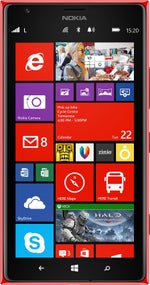
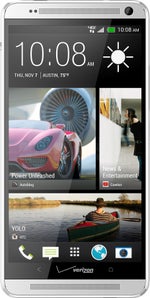
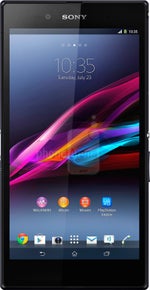










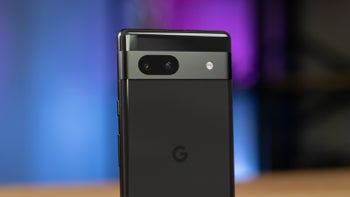
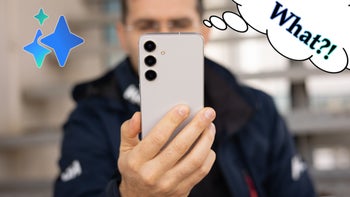
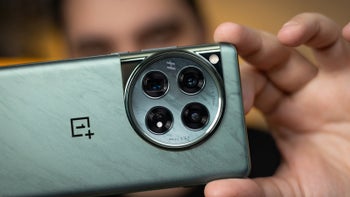
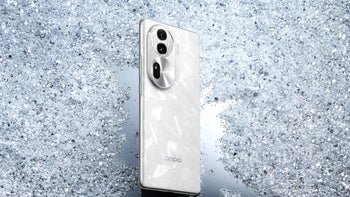

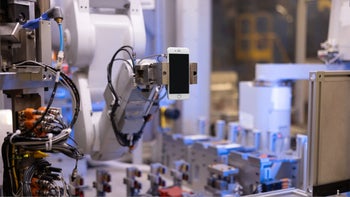




Things that are NOT allowed: